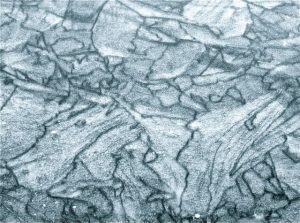Chapter 5 – Meltdown to Beauty
Walden Pond –the deepest lake in Massachusetts– is the surface manifestation of groundwater exposed in four coalesced topographic basins, each of which is a glacial kettle. All were created by the meltdown of stagnant ice and the subsequent collapse of a formerly flat delta plain prior to postglacial stabilization and re-vegetation. This terrain of Walden Woods had droughty soils and acetic waters; features that precluded agricultural development and preserved it for Thoreau’s pastoral remove. Observations from Walden’s western basin, which is radially symmetric, overwhelmingly dominate Walden’s text.

Though he exaggerated, Thoreau correctly pointed out that the shore of Walden is normally so steep that a single leap will carry you into water that is over your head. This steepness is essentially a collapse slope, the "angle of repose" at which coarse sand and bouldery gravel came to rest. Walden was formed when a block of ice, trapped in a bedrock hollow, melted downward and the adjacent slopes collapsed inward as a consequence.

Surface glaze of lake ice on Walden Pond in January, 2013. In sequence, the ice was frozen, broken up by waves, and refrozen on the surface. Thoreau was fascinated by ice in all of its forms, including the glacial ice he read about from: Elisha Kent Kane’s Greenland; Charles Darwin’s Patagonia); James D. Frobes’ European Alps; and Louis Agassiz’s theories.

Most of Thoreau’s scientific sojourning and the bulk of the Nature writing in Walden‘s text, took place when he was living with his family in this Main Street house in town, not at his tiny bachelor pad in the woods above Walden Pond. Thoreau’s private space, in which he kept his rock and mineral collection, was in the garret of the attic floor.